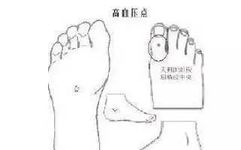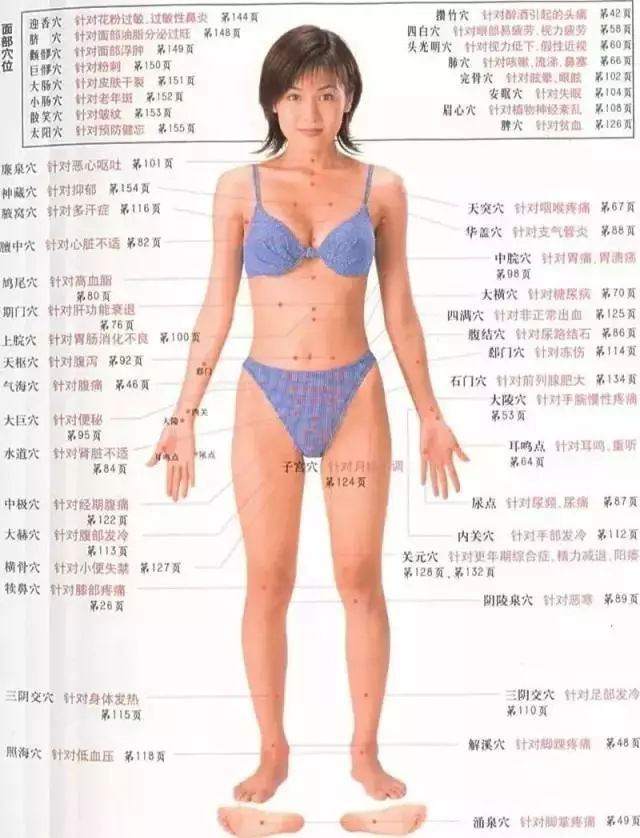
1. Tonsillitis – Hegu (LI4)
“Hegu” is located at the extension of the bone when the thumb and index finger are spread at a 45-degree angle.
Applying pressure on Hegu is very effective for relieving tonsillitis. This acupoint is also effective for toothache, hypertension, and facial acne.
2. Insomnia – Yongquan (KD1)
“Yongquan” is located on the sole of the foot. Rubbing the feet can stimulate both Yongquan points simultaneously, which is more effective. Repeat this 36 times, and soon your mood will stabilize, allowing you to fall asleep.
3. Spontaneous Sweating, Night Sweats – Yingu (KD10), Shenshu (BL23)
Sweating is governed by the Kidney and Bladder meridians. Therefore, Yingu located on the inner side of the knee joint and Shenshu located 2 cm to the left and right of the second lumbar vertebra are very effective for hyperhidrosis.
4. Low Blood Pressure – Baihui (GV20)
When feeling heavy-headed or dizzy, apply firm pressure on the Baihui acupoint, which is at the center of the top of the head. Place the middle fingers of both hands on it, exhale slowly, and press firmly for 6 seconds. Repeat this 5 times to improve blood circulation.
5. Rheumatic Pain – Neiguan (PC6), Waiguan (SJ5), Baili (ST37)
For upper body pain, applying pressure on Waiguan and Neiguan is most effective. Waiguan is located three finger widths above the wrist crease. Neiguan is on the opposite side of Waiguan.
For lower body pain, Baili is most effective. When applying pressure to these acupoints, alternate sides while exhaling and pressing for 6 seconds, repeating 10 times. If the affected area is swollen or inflamed, do not press directly on it, but gently press around it instead.
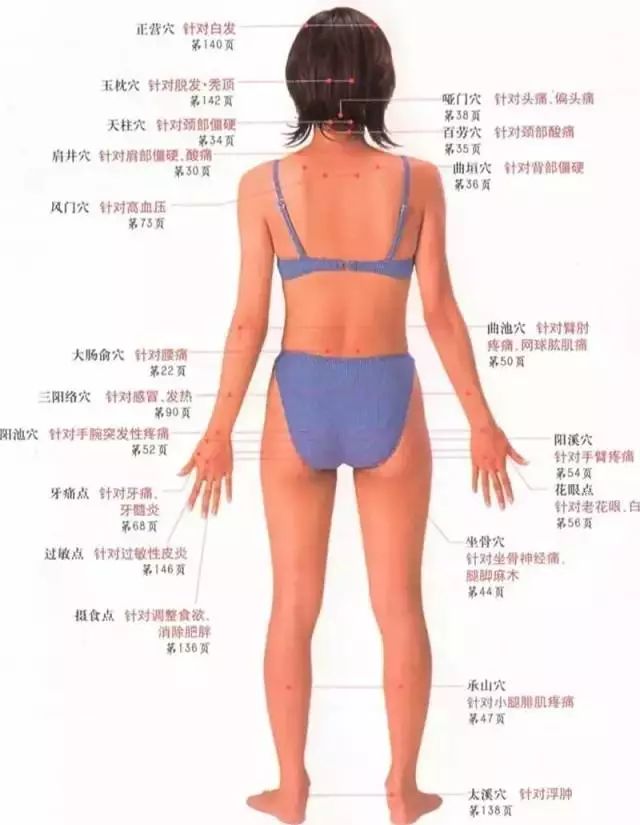
6. Cold, Fever – Dazhui (GV14)
Straighten your body and lean your neck forward. At the base of the neck, there is a prominent bone. The closest bone above this is the seventh cervical vertebra, and the depression between this and the first thoracic vertebra is the Dazhui acupoint. Firmly pressing this point can help reduce fever and quickly alleviate cold symptoms.
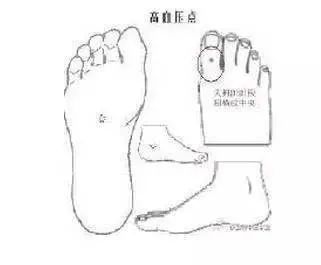
7. Hypertension – Hypertension Point
On the root of the big toe, there is a thick horizontal line. In the center is the Hypertension Point. Slowly exhale and apply firm pressure with both thumbs for 6 seconds. Do this 3 times on each foot. Perform this pressure technique 10 times a day for a month, and significant effects can be observed regardless of how high the blood pressure is.
8. Menopause – Xuehai (SP10)
From the upper corner of the kneecap, about three finger widths above the muscle groove, there is a painful spot known as Xuehai. While slowly exhaling, apply pressure with your thumb for 6 seconds. Repeat this 10 times daily to alleviate annoying menopausal symptoms.
9. Hangover Relief – Rubbing the Dorsum of the Foot
The Taichong (LR3) acupoint on the dorsum of the foot is excellent for hangovers. It is located between the big toe and the second toe. Stand and use one foot to press down on the other foot’s dorsum, alternating this action. The next morning after a hangover, you may have a headache, but don’t worry; just continue this rubbing exercise for three minutes, and your mind will become very clear.
10. Sore Throat – Shizhu (LU5), Shangshizhu (LU6)
For a sore throat, apply pressure on both Shizhu and Shangshizhu acupoints. First, raise your arm; in the center of the inner arm, there is a thick tendon, and the outer side of this tendon is Shizhu. About 3-4 cm above Shizhu is Shangshizhu, where pressing will cause pain.
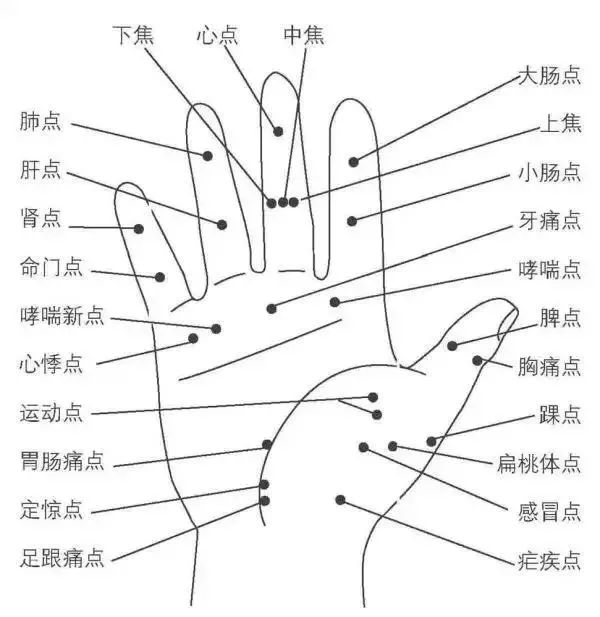
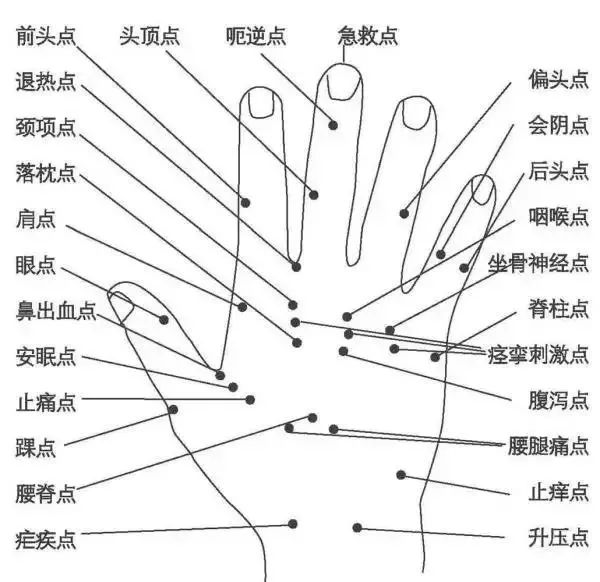
11. Pseudomyopia, Eye Fatigue – Eye Surrounding, Xingjian (LR2)
Pseudomyopia and eye strain are caused by eye fatigue. Here are some acupressure techniques to relieve eye fatigue.
① Lightly press around the eyes – Close your eyes and gently press the eyelids until you feel slight pain. Use your index and middle fingers to press on the eye sockets.
② Kezhuren (GB1) – Located in the central bone hollow on the side of the face where glasses would sit, pressing this point can relieve eye fatigue. While pressing, exhale slightly and apply pressure with your palm for 6 seconds, repeating this 10 times.
③ Xingjian – Located between the big toe and the second toe, this point is related to the eyes and liver. While pressing, exhale and apply firm pressure until you feel slight pain, repeating this 2-3 times. This point is most effective for eye fatigue caused by lack of exercise and overeating.
12. Shoulder Muscle Stiffness and Pain – Tianzhu (BL10), Jianjing (GB21)
There are three acupoints that can relieve shoulder stiffness and pain. One is Tianzhu, located 2 cm to the left and right of the neck. The second is Jianjing, and the third is on the inner side of the scapula, which is painful when pressed. While applying pressure to these three acupoints, exhale slowly and rub for 6 seconds, repeating 10 times to effectively relieve shoulder stiffness and pain.
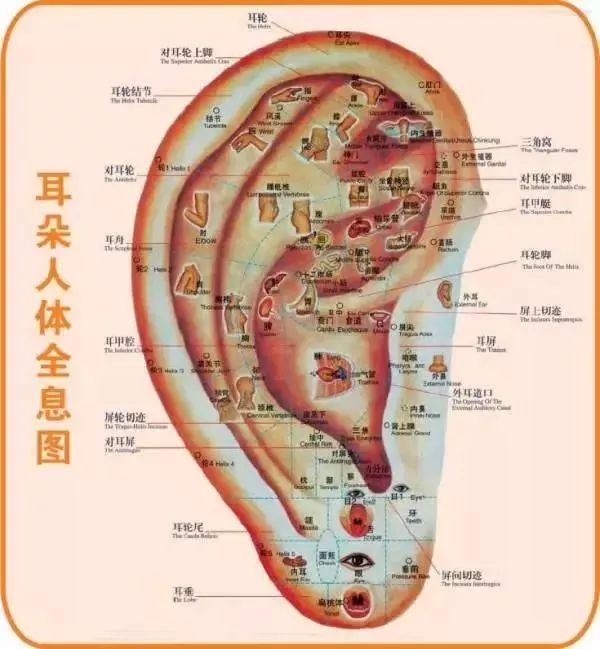
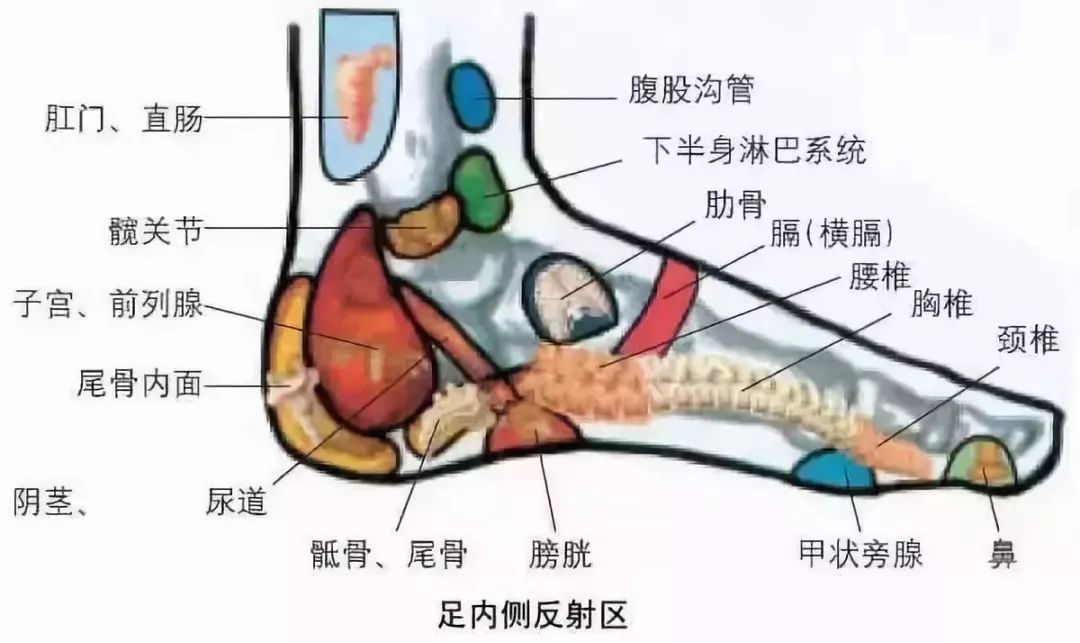
13. Nasal Congestion, Runny Nose, Sneezing – Yingxiang (LI20)
Applying pressure on Yingxiang is very effective for relieving runny nose, nasal congestion, and all discomfort related to the nose. Yingxiang is located 1 cm to the left and right of the nostrils. Apply pressure on both sides simultaneously, taking a deep breath, placing your index fingers on it, and while exhaling slowly, press for 6 seconds. Then inhale while releasing the pressure, repeating this 10 times to relieve nasal congestion and runny nose. Stimulating this acupoint can also revive your sense of smell, enhancing your appetite.
14. Lower Back Pain – Rubbing the Lower Back
The method for rubbing the lower back involves placing the palm on the lower back and vigorously rubbing up and down. This rubbing can stimulate the meridians and acupoints related to lower back pain, such as Mingmen (GV4), Shenmai (BL23), and Zhi Shi (BL52), making the lower back feel relaxed.
15. Rheumatism, Joint Pain – Rubbing the Knees
If you regularly perform knee rubbing to prevent knee aging, you won’t have to worry about rheumatism. The rubbing method involves sitting on a chair and using both hands to rub the knee in a circular motion, also doing the same on the inner side of the knee. This knee rubbing can be easily done during breaks, and it’s best to rub until the knees feel warm.


16. Chronic Gastritis, Stomach Pain – Zhongwan (CV12)
Zhongwan is an essential acupoint for gastrointestinal diseases, located at the center of the line connecting the lower end of the sternum and the navel. While lying on your back and relaxing your muscles, apply firm pressure with your fingers while slowly exhaling for 6 seconds, then release your hand. Repeat this 10 times to make your stomach feel comfortable.
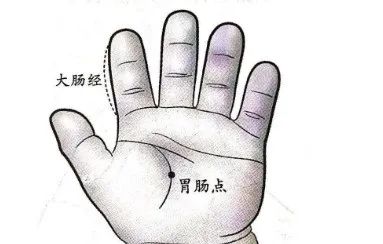
17. Presbyopia – Weichang Point
The eyes are governed by the gastrointestinal acupoints, so applying pressure on the Weichang Point can delay aging and prevent eye aging. Weichang Point is located at the center of the life line on the palm. While applying pressure, exhale slowly for about 6 seconds, doing 20 repetitions, and performing this 5 times a day.
Pressing the left hand is effective for the right eye, while pressing the right hand is effective for the left eye. Additionally, use the same technique to press the acupoints 2 cm to the left and right of the back of the neck, which are known as the Eye Point and Tianzhu.
18. Intercostal Neuralgia – Waiguan (SJ5), Linqi (GB34)
On the back of the hand, three finger widths from the wrist crease is Waiguan. Between the little toe and the fourth toe, rub upwards with your fingertips until you reach Linqi. While applying pressure on these two acupoints, exhale slowly and lightly press for 6 seconds, repeating 10 times on each side to relieve pain.
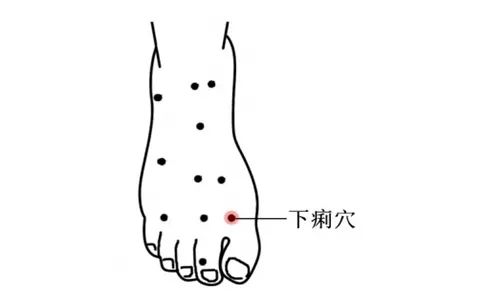
19. Measles – Linaoting (ST44)
About 3 cm below the root of the second toe is Linaoting. While slowly exhaling for 6 seconds, apply firm pressure with your index and middle fingers until you feel pain. Repeat this 30 times.
20. Dizziness, Lightheadedness – Zhongzhu (PC8)
The acupoint for relieving dizziness is called Zhongzhu, located 2 cm below the root of the little finger. Apply firm pressure while exhaling slowly, and you will feel a release of tension. This acupoint is effective for dizziness and lightheadedness when standing up, so be sure to remember it.
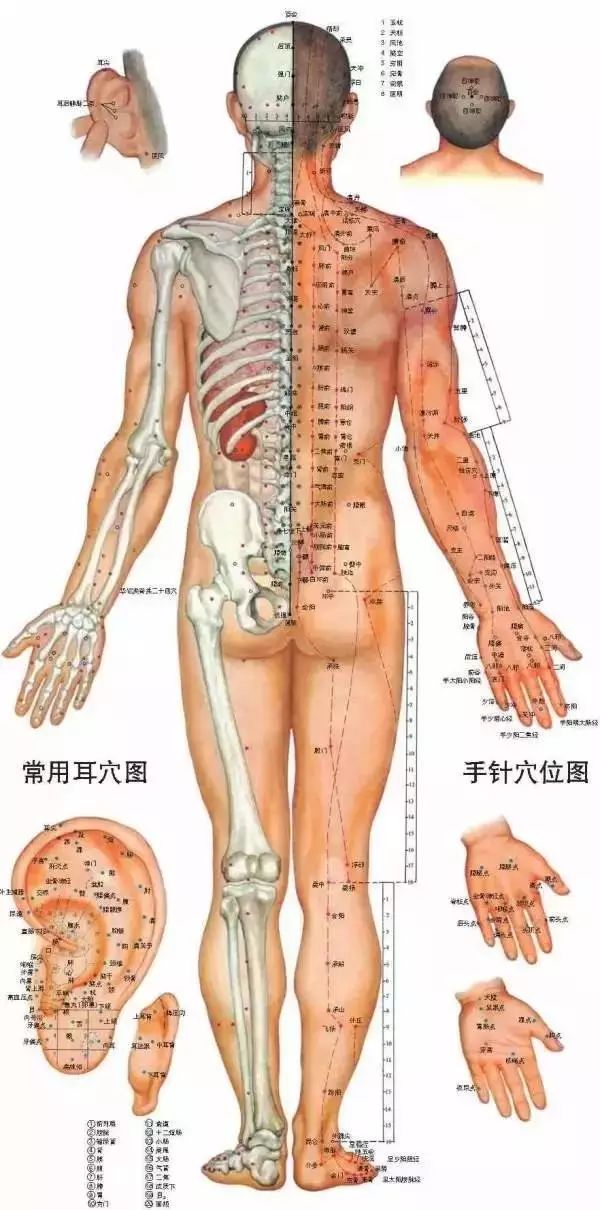
21. Cystitis – Zhongji (CV3), Yongquan (KD1)
First, draw a line from the navel to the pubic bone and divide it into five equal parts. The acupoint at the 1/5 position from the bottom is called Zhongji. This point not only enhances energy but also has special effects on the urinary system.
While applying pressure, exhale slowly and press lightly for 6 seconds, repeating this 20 times. Next, apply pressure on the Yongquan acupoint located slightly closer to the toes on the sole of the foot, using the same technique for 10 repetitions.
22. Asthma – Zhi Chuan (BL13)
To prevent asthma, the acupoint located 2 cm to the left and right of the Dazhui (GV14) is very effective. While exhaling slowly, apply firm pressure for 6 seconds, repeating this 3 times.
23. Male Premature Ejaculation, Female Abnormal Discharge – Rubbing the Lower Back
Rub your hands together to warm them, then rub your lower back up and down for 3 minutes every morning and evening until you feel warmth. This rubbing technique is effective for premature ejaculation and impotence, as it stimulates Mingmen (GV4), Shenshu (BL23), and Zhi Shi (BL52), as well as addressing female reproductive issues, particularly abnormal discharges.
24. Four Types of Cold Sensitivity – Qihai (CV6), Liangqiu (ST34)
For overall coldness, draw a straight line connecting the navel and the pubic bone, dividing it into ten equal parts. The acupoint at the 3/10 position from the navel is called Qihai, and apply pressure 6 times.
For coldness in the feet, the acupoint is called Liangqiu. When extending the knee, the muscle bulge’s depression is about three finger widths above the right end of the kneecap. Apply pressure 20 times.
For coldness in the shoulders and wrists, use the Liangqiu acupoint located at the depression at the ankle root. Apply pressure 20 times.
For coldness in the lower back, the acupoint is called Yangguan (GV3), located in the depression between the fourth and fifth lumbar vertebrae. Apply pressure 10 times.
When applying pressure to these four acupoints, take a deep breath and exhale slowly, pressing every 6 seconds.
25. Morning Sickness – Tianzhu (BL10), Sanyinjiao (SP6)
To calm vomiting and nausea, apply pressure on Tianzhu and Sanyinjiao (known as Women’s Sanli). Tianzhu is located 2 cm below the depression at the back of the neck. While holding your fists, exhale and strike firmly every second. Do this in sets of ten, taking short breaks in between.
Sanyinjiao is located on the inner side of the ankle, about 6 cm above the bone. Use the same technique to strike, doing three sets, alternating sides.


26. Lumbar Strain, Chronic Back Pain – Shangxian Point
Shangxian Point is located in the depression directly below the fifth lumbar vertebra. While exhaling slowly, apply firm pressure for 6 seconds, repeating this 20 times to relieve pain. Another method is to stand with your knees straight and bend, applying pressure at the top of the fold.
27. Eczema – Zhiyang (LI11)
One of the acupoints for relieving itching and eliminating eczema is called Zhiyang. Stimulating this acupoint can relieve itching. Zhiyang is located at the intersection of a vertical line drawn down from the shoulder depression and the horizontal line at the level of the nipple. While exhaling slowly, apply pressure for 6 seconds, repeating this 10 times to relieve itching.
28. Stomach Pain and Abdominal Pain – Rubbing the Abdomen
The method is very simple: use your palm to rub your abdomen in a circular motion. First, place your right hand on the right side of your chest and move in a counterclockwise direction from the upper abdomen to the lower abdomen, then back to the original position through the left abdomen. Next, use your left hand to do the same starting from the left side of your chest, alternating between right and left hands for a total of 36 times.
This abdominal massage can eliminate fatigue in the digestive organs and strengthen them. Continuing this will improve the stomach and intestines while also preventing stomach pain and abdominal pain.
29. Wrist Muscle Pain – Jianjing (GB21), Shousanli (LI10)
To relieve muscle pain, applying pressure on Jianjing and Shousanli is most effective. Jianjing is located at the junction above the nipple and shoulder line. While applying pressure, exhale slowly and use your thumb and index finger to pinch both shoulders until you feel slight pain for 6 seconds, repeating this 10 times. Next, apply pressure on Shousanli using the same technique, alternating hands for 10 repetitions to relieve muscle pain in the hands.
30. Cervical Pain, Numbness, etc. – Tianzhu (BL10), Dazhui (GV14)
At the depression just below the occipital bone, there is a prominent muscle. The outer depression of this muscle is Tianzhu, which is essential for addressing any abnormalities above the neck. While applying pressure, exhale slowly and press for 6 seconds, repeating this 20 times. Next, apply pressure between the seventh cervical vertebra and the first thoracic vertebra, known as Dazhui. While pressing, nod your head forward, repeating 10 times.
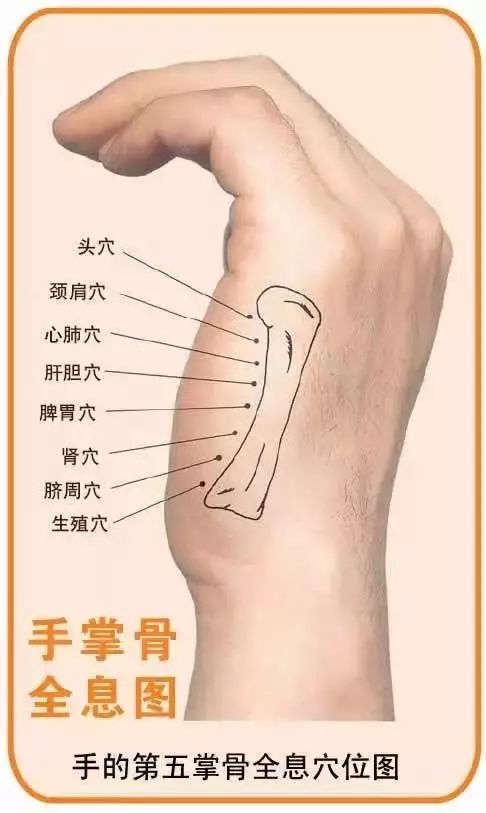
31. Knee Joint Pain – Xiyan (ST35)
Joint pain is not limited to the knees; sometimes the ankles, wrists, and arms can also feel pain. Applying pressure on Xiyan is very effective for joint pain. Now, let me introduce this acupoint. Xiyan is located in the depression below the knee when it is bent at a right angle. While applying pressure with both middle fingers, exhale slowly and press firmly for 6 seconds, repeating 10 times on each side, doing this 3 times a day.

32. Diarrhea – Xiali (ST44), Tianshu (ST25)
To relieve diarrhea, one acupoint is located about 2 cm inward from the space between the big toe and the second toe, known as Xiali. While exhaling slowly, apply firm pressure with your thumb for 6 seconds, repeating this 15 times on each foot.
The second acupoint is Tianshu, located three finger widths to the left and right of the navel. While applying pressure, relax your muscles, take a deep breath, and while exhaling slowly, apply light pressure for 6 seconds, releasing your hand only after exhaling completely. Repeat this 10 times.
33. Menstrual Pain – Sanyinjiao (SP6), Neiguan (PC6)
Here are two acupoints that are very effective for menstrual pain.
One is called Sanyinjiao, an essential acupoint for female conditions, located on the inner side of the ankle, pressing up four fingers to the most painful spot. While exhaling slowly, apply firm pressure every 6 seconds, repeating 20 times.
Next, apply pressure on the Neiguan acupoint, located on the inner side of the wrist, about three finger widths above the wrist crease. While exhaling slowly, apply firm pressure for 2 seconds, repeating this 5 times on both sides. This will alleviate menstrual pain.
34. Sciatica – Pressing Pain Points
The acupoint for sciatica is located along the midline of the back of both legs. However, the midline does not refer to the entire line; it must be at the painful spots to be effective. Apply pressure from the top down while exhaling slowly for 6 seconds, repeating this 15 times. After finishing one leg, switch to the other leg.
35. Headache – Taiyang (GB4)
When experiencing a headache, immediately press your thumbs on both Taiyang acupoints, applying pressure while rotating. Do this a total of 36 times. Remember to slightly lift your thumbs after each press and breathe before pressing again.
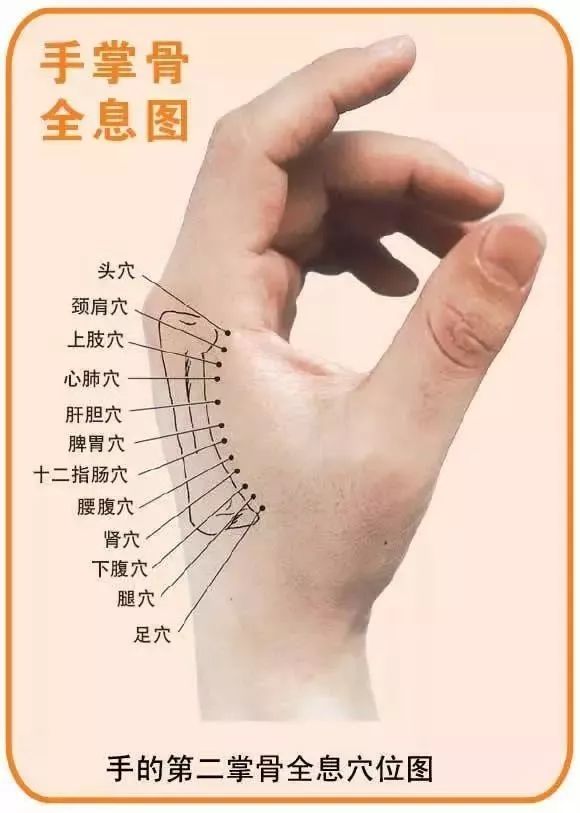
36. Shoulder Periarthritis – Jianjing (GB21)
There are several acupoints on the shoulder, among which rubbing the Jianjing acupoint is most effective for shoulder soreness, pain, and periarthritis.
37. Constipation, Strengthening the Stomach and Intestines – Rubbing the Arms
The arms are filled with many meridians and acupoints that can exercise the internal organs, especially those related to the stomach and intestines on the outer side.
When someone has constipation, vigorously rubbing the arms can relieve hemorrhoids and asthma, and it also helps improve physical condition and restore energy.
38. Toothache, Headache – Pressing Hegu (LI4)
When the palms are brought together, there is a slightly raised area between the thumb and index finger, which is the Hegu acupoint. Hegu is effective for headaches and toothaches. It is a special acupoint for pain relief.
When experiencing a toothache or headache, simply massage the Hegu acupoint to alleviate the pain. Use your right hand to vigorously massage the Hegu on your left hand, then switch hands and use your left hand to massage the Hegu on your right hand, and the intense pain will naturally ease.

